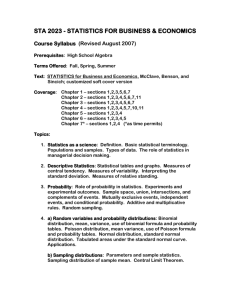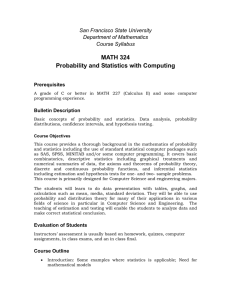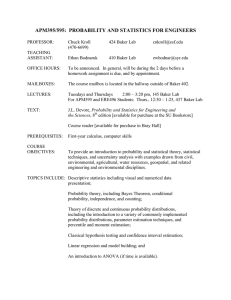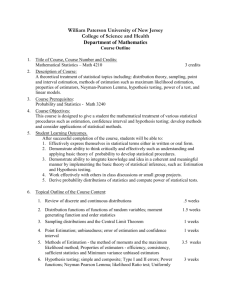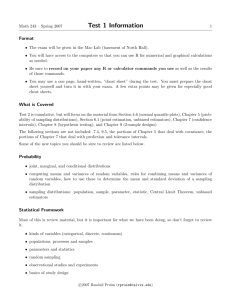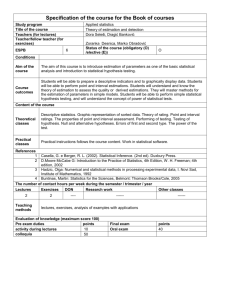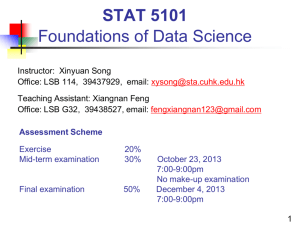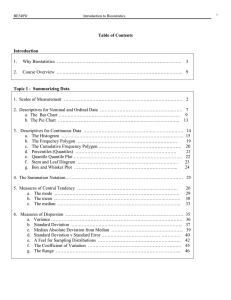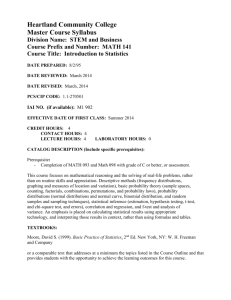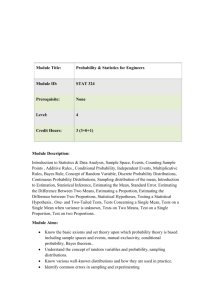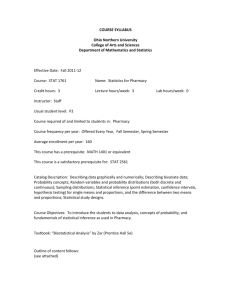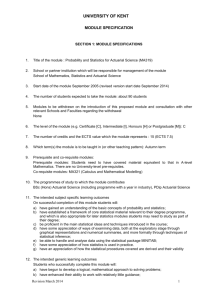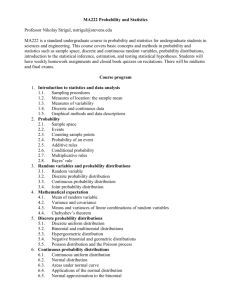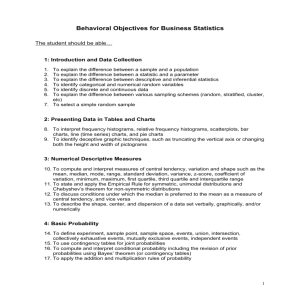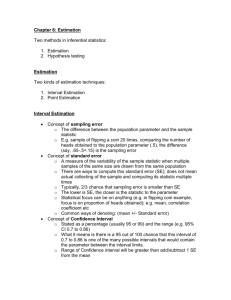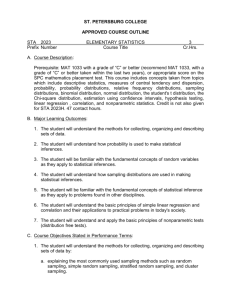MGMT 201: Statistics
advertisement
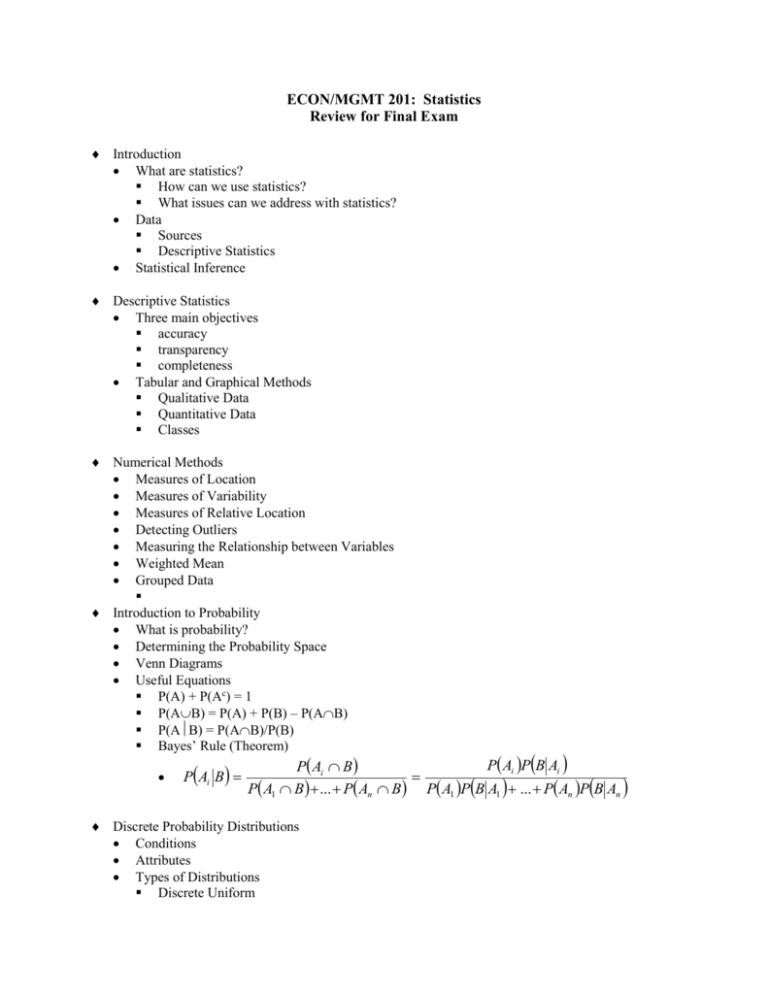
ECON/MGMT 201: Statistics Review for Final Exam Introduction What are statistics? How can we use statistics? What issues can we address with statistics? Data Sources Descriptive Statistics Statistical Inference Descriptive Statistics Three main objectives accuracy transparency completeness Tabular and Graphical Methods Qualitative Data Quantitative Data Classes Numerical Methods Measures of Location Measures of Variability Measures of Relative Location Detecting Outliers Measuring the Relationship between Variables Weighted Mean Grouped Data Introduction to Probability What is probability? Determining the Probability Space Venn Diagrams Useful Equations P(A) + P(Ac) = 1 P(AB) = P(A) + P(B) – P(AB) P(AB) = P(AB)/P(B) Bayes’ Rule (Theorem) PAi B P Ai PB Ai P Ai B P A1 B ... P An B P A1 PB A1 ... P An PB An Discrete Probability Distributions Conditions Attributes Types of Distributions Discrete Uniform Binomial Poisson Approximating the Binomial with the Poisson Continuous Probability Distributions Conditions Interpreting a Continuous Probability Density Function Types of Continuous Distributions Uniform Distribution Normal Distribution Standard Normal Distribution The Normal Approximation to the Binomial The Exponential Distribution Sampling and Sampling Distributions Statistical Inference Sampling Sampling Distributions The Sampling Distribution of x The Central Limit Theorem Point Estimation Properties of Point Estimators Biasedness/Unbiasedness Efficiency Consistency Interval Estimation What is interval estimation? Interval Estimation of a Population Mean Finite Populations Infinite Populations Basic Intuition: CLT example: Interval Estimation using Sample Means Margin of Error Choosing a Sample Size Dealing with Small Samples The t Distribution difference between t and normal Hypothesis Testing What is hypothesis testing? Null Hypothesis Alternative Hypothesis No certainty in hypothesis testing Type I and Type II Errors Testing Hypotheses Steps in Hypothesis Testing 1. Determine H0 and Ha. 2. Choose an appropriate test statistic 3. Specify . 4. Collect data and calculate the test statistic 5. Interpret the test statistic. One-Tailed Tests: Large Samples Two-Tailed Tests: Large Samples Small Samples Tests About Proportions Understanding Type II Errors Tests Concerning Two Populations Basic Intuition: Characteristics of the difference between two variables. Large Samples Small Samples Pooled Estimation Matched Samples Final Exam Distribution Topic Probability - Basic Probability - Bayes’ Rule - Poisson - Exponential - Binomial Hypothesis Testing - One Tailed Tests - Two Tailed Tests - Small Samples - Large Samples - One Population - Two Populations - Proportions - Matched Samples Questions 3.5 Points 34 5.5 66 Type Numerical Problems Short Answer Questions 8 1 Points 92 8
